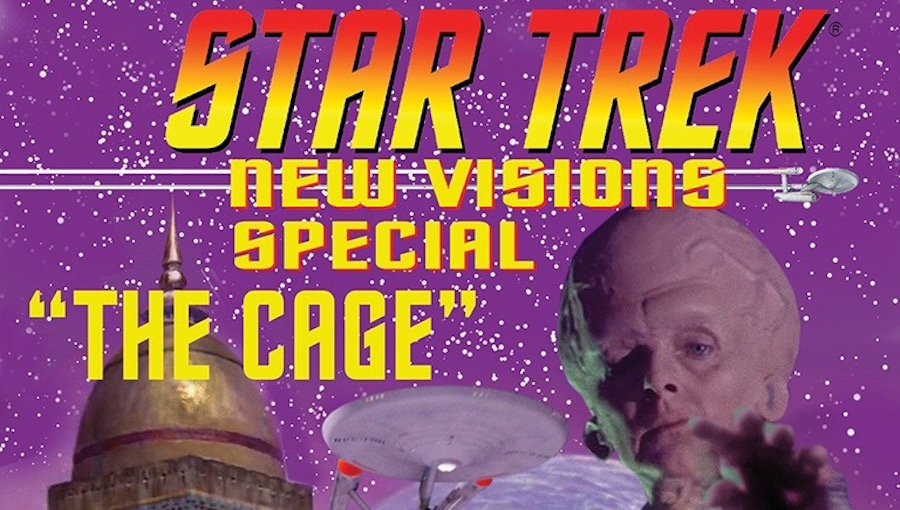Star Trek turns 50 this year, and though pop culture primarily recognizes Captain Kirk, Mr. Spock, and the rest of the Enterprise crew as the progenitors of the long-running franchise, that’s not where it all began. Star Trek had a very troubled path to television, frequently relying on special interest from influential people like Lucille Ball to get on (and stay on) the air. Some of this was money, some concern that creator Gene Roddenberry’s vision was too intellectual, and some a result of Roddenberry’s own habits. Star Trek is relatively rare in that NBC gave it not one shot at a pilot, but two; the second pilot, “Where No Man Has Gone Before,” features Kirk, Spock, and many of the other characters even the most casual Trek viewer would recognize, in addition to many of the series’ tropes. Before that episode, though, there was the first, rejected pilot, “The Cage,” adapted in this issue by John Byrne in the photo-comic style he’s built up over the course of New Visions.
The adaptation is very true to the original, even adopting its blue and white title font rather than the slanted yellow characters the show would later use. “The Cage” has many components that are kept into the series later, including the transporters, Spock (albeit in a less central role, and with a bit more enthusiasm), and the Enterprise herself. But many things aren’t quite there yet; other than Spock, none of the classic Star Trek characters appear. The color palette is far more monochrome, perhaps because the pilot was shot for black-and-white picture. A lot of the terminology isn’t quite there yet: “time warp” and “hyperdrive” instead of “warp drive,” “lasers” instead of “phasers,” and so on. Most obvious, of course, is Jeffrey Hunter as Captain Christopher Pike; the actor turned down the option to continue into the second pilot, making way for William Shatner’s Kirk.
It’s easy to see why NBC might’ve been concerned about using “The Cage” to introduce a high-budget sci-fi series. Roddenberry (and Star Trek as a whole) valued intellectual consideration over swashbuckling action, and this episode, written by Roddenberry himself, certainly shows it. In the space of an hour-long episode, Pike proselytizes on responsibility, life, dreams, captivity, and emotion, but he doesn’t punch many things, and he commits arguably the greater crime of relating a no doubt more exciting adventure as a reason he’s doubting his resolve to be captain of a starship. Star Trek’s early episodes had to find more ways to incorporate adventure into their contemplations. But at its core, “The Cage” is very much of a piece with classic Star Trek; it’s just likely not the first episode you’d show to a dubious non-Trekker with a short attention span.
Byrne, here, does a little editing to the episode’s story, slicing out some extraneous lines of dialogue and happily letting the lengthy pauses of some of the episode’s more sluggish scenes disappear into the gutters of the comic page, but by and large the words and the story are Roddenberry’s. The images are straight from the episode, so there’s none of Byrne’s visual experimentation. It is a very straightforward adaptation.
The value of it, then, lies in one’s value of “The Cage” itself. As a historical footnote in the history of Star Trek, it is interesting, and for a while it was widely considered “lost;” though “The Cage” was sliced apart and incorporated in the “The Menagerie,” Star Trek’s only two-part episode, it wasn’t publicly viewable in its original form until 1988, and even after that could be a little hard to come by. Now, though, it’s part of Blu-ray sets and available on Netflix for streaming, so New Visions is hardly the only avenue to take in what might have been; however, Byrne’s adaptation certainly runs a bit more smoothly, turning an often-slow sixty-three minutes into a more digestible read without losing the meat of the content. It’s a worthy tribute in that it celebrates what works in Roddenberry’s original vision, and maybe that’s good enough.

